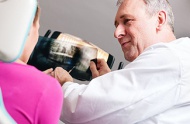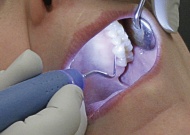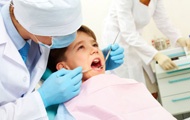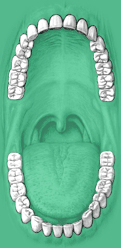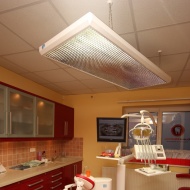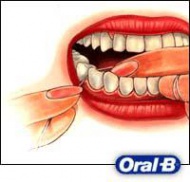
It is not rear that the lack of the thorough chewing (the consumption of soft foods), bad prosthesis (poorly bonded crowns) or bad positioned (submerged or high) fillings contribute to the appearance of bacteria, than its proliferation. It is not quite well known that some medicines (for example heart patients who are taking calcium channel blockers and preparations for the epilepsy) predispose to gingivitis.
The intact teeth make you confidence, it is essential for the thorough chewing: it is worth to pay attention to it. Let’s start with the basis: buy such a toothbrush which handle does not slip. Make sure it fits in your hand. The small-headed toothbrushes are good, because you can reach easily the teeth’ corners. If possible, choose a moderately strong bristle; clean the exposed dental neck with soft bristle. Use hard bristle toothbrush for removing stubborn plaque. Use plastic bristle brush: the natural bristles are soon separated, don’t durable, thereby the bacteria can settle easier among them, and they can hurt the gum. If you feel it difficult, or you feel you can’t brush your tooth thoroughly, get an electric toothbrush, with this it is easier.
Always store the toothbrush up with its head, so it can dry out, therefore don’t settle the bacteria on it (or at least less). Don’t use your toothbrush the others, and you don’t use someone else’s as well, otherwise you can easily pass and get the decay causing bacteria. The “life” of the toothbrush is – under normal use- around two months, but if the bristles wear out sooner, get a new one.
After illness (cold, cold sores), or if your gum is bleeding, change the toothbrush, because among the bristle’s threads may persist the pathogens, the illness can recur. You have to get rid of the dental stone as soon as possible (the dentist make the removal!). Twice a year check and clean your teeth with your dentist.
The various jewelry, and piercings in the tongue, on the upper or lower lip can easily inflamed; they can cause pain, and nerve damage which may harm to the teeth in long term.
Proper dental care
During tooth brushing it is recommended to use the so called vibration/ shaking technique. Approximately close 45 degrees the edge of the toothbrush and the gum, so the peaks of the bristles can reach the interdental spaces. If you move the toothbrush slightly “shake”, you can feel the bristles in the interdental spaces, so its peaks don’t bend. Remove the plaque from the gum towards to the end of the teeth. During tooth brushing keep a steady sequence which you don’t forget. For example you can use the following system: the jaw’s internal cleaning from left to right, the back teeth’ back side cleaning from the right side to the left side, the lower teeth’s outside cleaning, the back teeth’ back side cleaning from left to right, cleaning the surfaces of the lower teeth’ chewing teeth. Every tooth’s surface you have to clean, the front and the back sides, and the gaps between the chewing surface and the teeth. You have to clean with particular care the back teeth, because the most decay accumulates on them. The transverse scrubbing or too much pressure is bad to the teeth in long term, because the thin dental enamel wears out, and the sensitive dental neck may remain in its place. In the case of free dental neck don’t use such toothpaste which recommended as tooth “whitening”.
Dental floss, mouthwash, dental stone exempting brush, coloring tablets
Clean your tooth with dental floss once a day. Unroll around your middle fingers approximately 50 cm dental floss, then stretch it with the help of your index and thumb fingers. For cleaning the lower teeth stretch the dental floss with your middle and index finger, and then move up and down in the gap between the adjacent teeth carefully (with sawing motion). The best is if you do it with receding, upward strokes from the gum. If between your teeth there is large gaps or the gum receded, clean the dental stone from the gaps between the teeth with the appropriate brush. (The brush is available in more sizes) Try the proper using of the dental floss and the small brush with your dentist, because if you use these tools wrongly, the tooth and the gum may hurt. You can check with the help of coloring tablets that the tooth brushing was effective or not. After tooth brushing should be taken this tablet. Those places which was discolor (and you can’t remove it with your tongue) show where can be found more plaque. With the help of the mouthwash cleaning the gaps between the teeth can be more efficient. This is especially recommended, if somebody wears braces.

